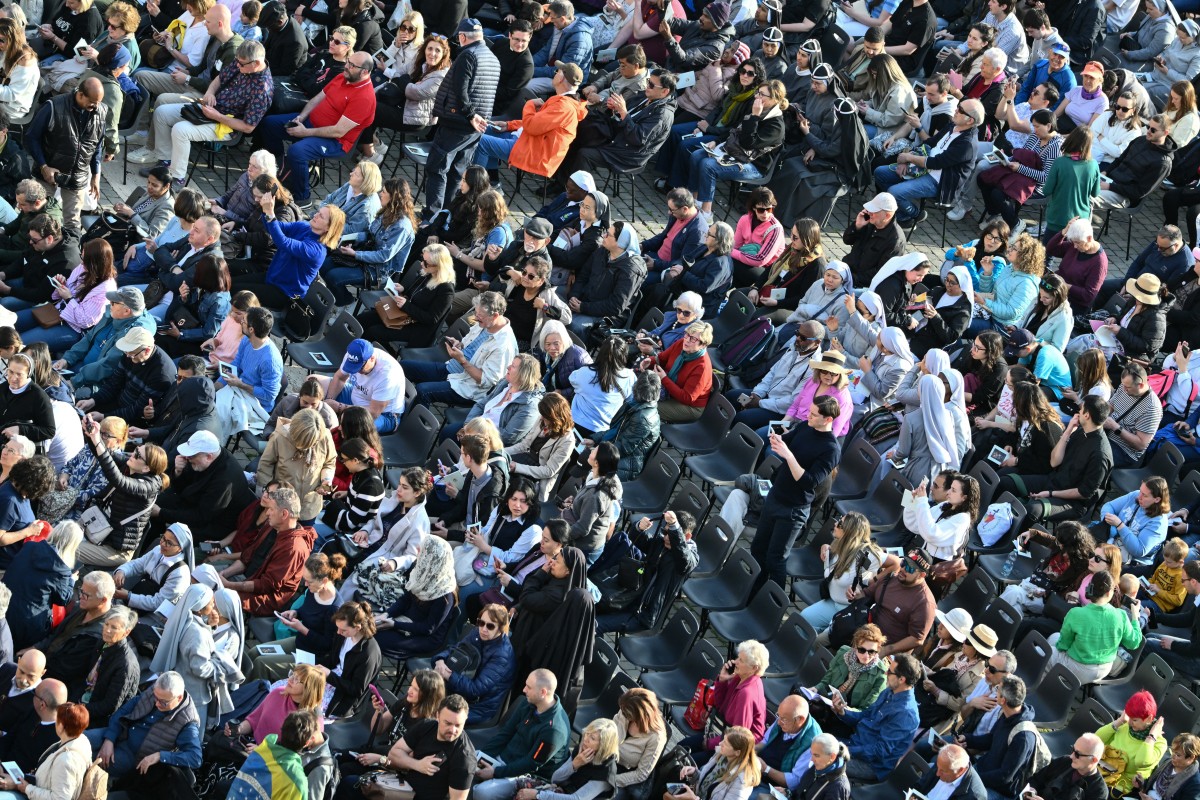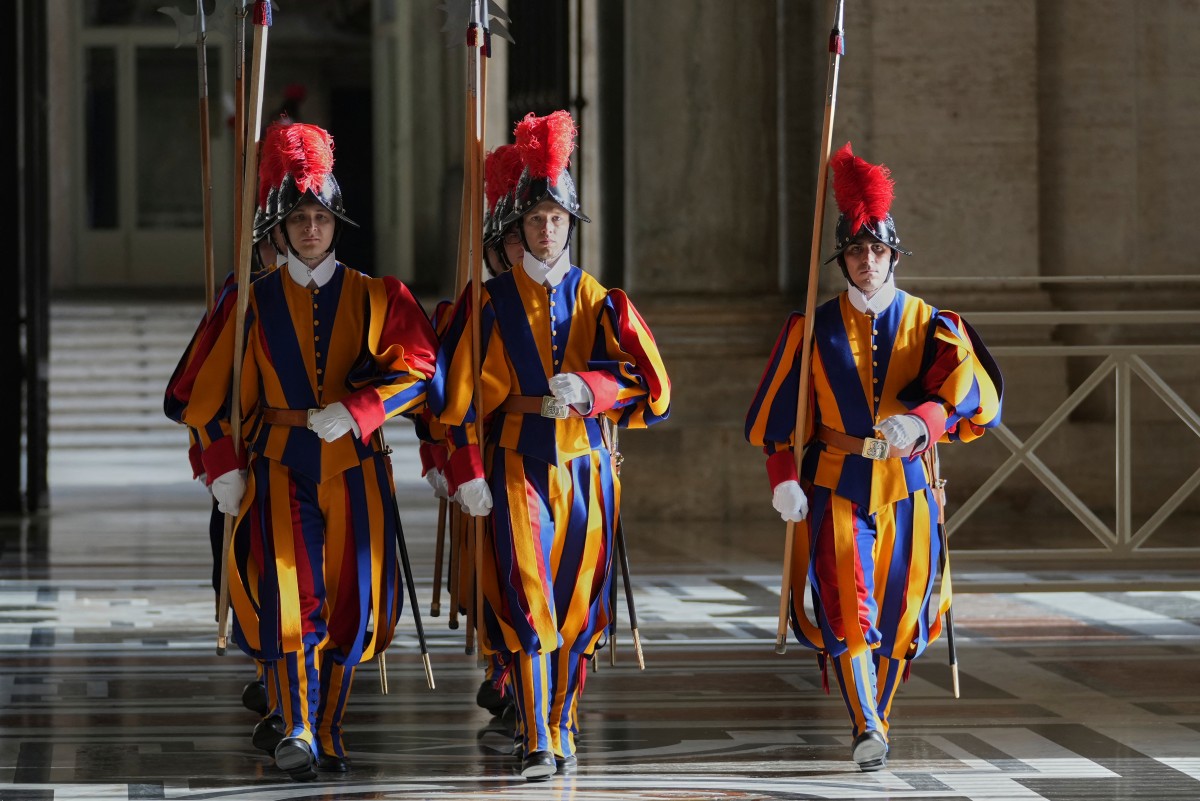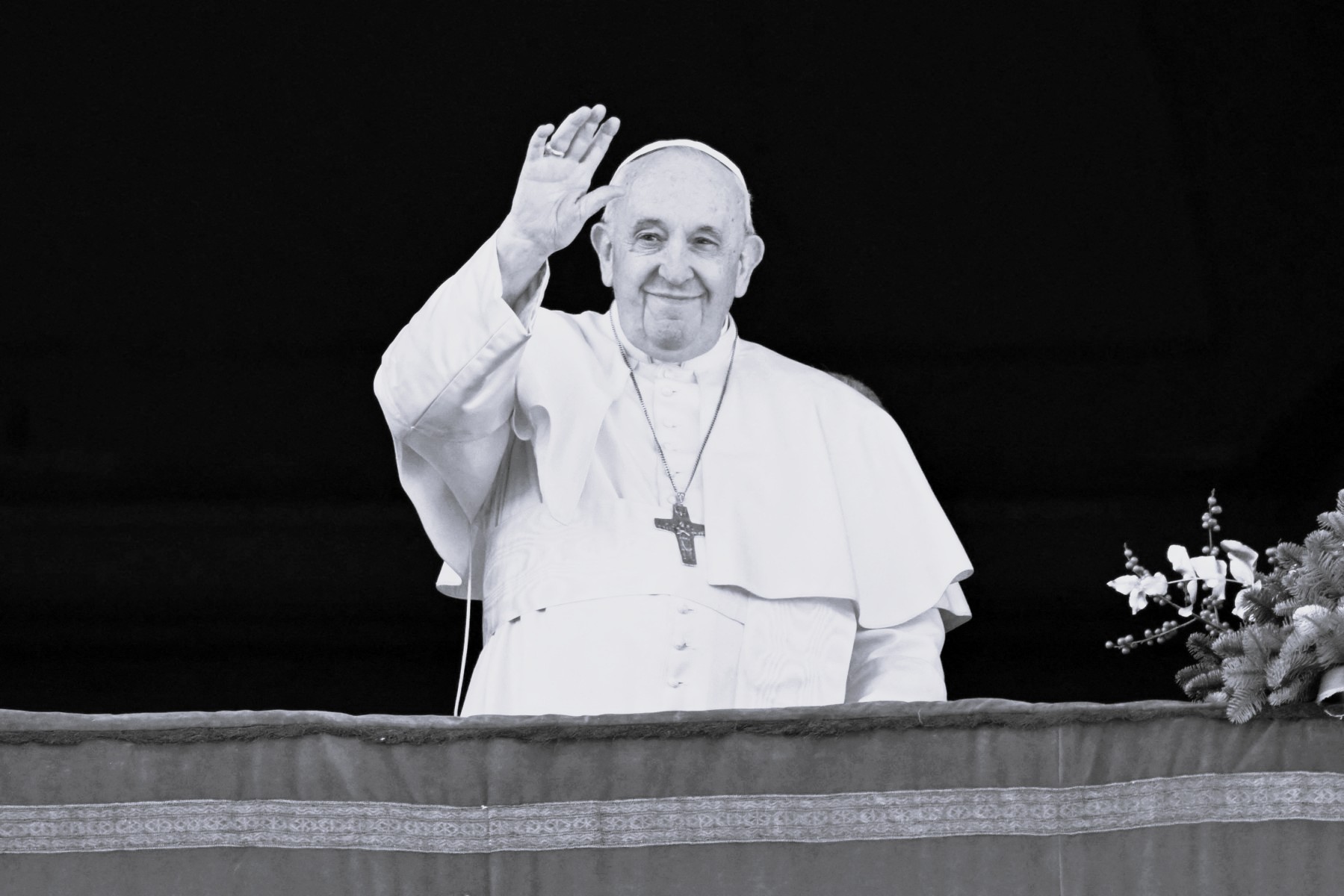
By Agence France-Presse
Pope Francis’ coffin will be transferred to St. Peter’s Basilica on Wednesday (April 23) for three days of lying-in state, with scores of Catholics and well-wishers expected to pay their respects to the beloved spiritual leader before he is laid to rest.
The body of the 88-year-old Argentine pontiff, who died after a stroke on Monday (April 21), will remain there until his funeral on Saturday (April 26) in the majestic Baroque plaza in front of the basilica.
Francis died in the Casa Santa Marta, the modest residence where he lived during his 12-year papacy, and his body was moved to its chapel on Monday evening. On Wednesday, it will be taken to the ornate St. Peter’s Basilica at 9:00 am (0700 GMT), in a procession accompanied by a liturgy, psalms, and prayers.
His simple wood coffin will enter through the central door of the basilica before being placed before the Altar of the Confession, where Bernini’s bronze baldacchino soars up toward Michelangelo’s famous dome.
The public will be allowed in from 11:00 am until midnight. Thursday (April 24) hours are 7:00 am to midnight, with Friday (April 25) from 7:00 am to 7:00 pm.
Saturday’s funeral is expected to draw hundreds of thousands of pilgrims, as well as world leaders including U.S. President Donald Trump and Ukraine’s Volodymyr Zelensky, as well as Britain’s Prince William.
Afterwards, Francis’ coffin will be transported to his favorite church, Rome’s papal Basilica of Santa Maria Maggiore, where his coffin will be interred in the ground and marked by a simple inscription: Franciscus. He will become the first pope in more than 100 years to be laid to rest outside the Vatican.

Come back to Rome
Italy is preparing for a major security operation for the funeral, with the weekend already due to be busy because of the public holiday on Friday, April 25.
Interior Minister Matteo Piantedosi said authorities were expecting between 150 to 170 foreign delegations, and tens of thousands of people to pay their respects to the late leader of the Catholic Church.
Italy has declared five days of national mourning—longer than the three days observed for Polish pope John Paul II in 2005, but less than the week declared for Francis by his native Argentina.
After the funeral, all eyes will turn to the process of choosing Francis’ successor as leader of the world’s 1.4 billion Catholics. Cardinals around the world have already been sent letters from the Holy See, instructing them to return to Rome to select a new pope.
Only those under the age of 80 are eligible to vote for a pope in the conclave, which should begin no less than 15 days and no more than 20 after the death of the pope.
About 60 cardinals of all ages already in Rome met on Tuesday (April 22) to choose the funeral date, in a so-called “general congregation”.
A second meeting is scheduled for Wednesday afternoon (April 23), led by the camerlengo, Cardinal Kevin Farrell, who is charged with running the day-to-day operations of the Holy See before a successor to Francis is chosen.

The passing of a liberal reformer
Francis’ death came less than a month after he was discharged from the hospital, where he spent five weeks battling pneumonia in both lungs.
Despite doctors calling for two months of rest, Francis continued to make appearances in public during his convalescence, where he appeared short of breath and without energy.
On Sunday (April 20), the day before his death, he circled St. Peter’s Square in his popemobile following Mass and his traditional address to greet the crowds, stopping to kiss babies along the way.
On Monday, April 21, he died at 7:35 a.m. after having suffered a stroke, a coma, and heart failure, according to his death certificate.
Images of Francis from Monday night lying in his open coffin inside the Casa Santa Marta chapel were published by the Vatican on Tuesday, April 22.
The unassuming pope, who eschewed pomp, was dressed in red papal vestments, with a mitre on his head and a rosary laced between his fingers.
Sister Maria Guadeloupe Hernandez Olivo, from Mexico, said it was “very hard, very sad” to hear news of his death.
“I did not expect it,” she told AFP in St Peter’s Square, adding: “I believe he’s in a better place, no longer suffering, but I do feel this emptiness for our pastor.”

Embalming and make-up: Pope’s body prepared for lying-in-state
Ahead of his lying-in-state, Pope Francis’ body was made ready to withstand Rome’s warm spring weather with a temporary embalming and a touch of makeup, an expert told AFP.
The body of the Argentine pontiff will be on display for three days in Saint Peter’s Basilica from Wednesday (April 23) before his funeral on Saturday (April 26).
With thousands of worshippers expected to queue up to bid him farewell, steps have been taken to avoid decay, as with previous popes.
Francis’ body underwent a temporary embalming process known as thanatopraxy, according to Andrea Fantozzi, founder of the Italian National Institute of Thanatopraxy (INIT).
“It involves the injection of preservative liquids through the circulatory system, followed by aesthetic care of the face and hands. The goal is to slow down the natural processes of decomposition,” Fantozzi told AFP.
The procedure, which uses a chemical fluid, has to be carried out within 36 hours of death and takes several hours. Its effect—a more serene and natural appearance of the deceased—lasts up to 10 days according to the INIT founder.
The Vatican published the first images of the pontiff in his open coffin on Tuesday (April 22), wearing his red papal vestments, a mitre on his head, and a rosary between his fingers.
The images came from a Monday evening (April 21) service in the chapel of the Casa Santa Marta, the Vatican residence where he lived during his 12-year papacy, and where he died.
Fantozzi declined to confirm whether he carried out Francis’s embalming, citing privacy concerns and Vatican protocol provisions. The Vatican declined to comment.
On its website, INIT lists Pope John Paul II and late opera great Luciano Pavarotti among the notable figures attended to by its experts.
Italian media reported that Fantozzi oversaw the embalming of Francis’s predecessor, Benedict XVI, who died in 2022 almost a decade after resigning as pope.
Besides for lying-in-state, temporary embalming is used for funeral wakes, body repatriations and niche burials to offset possible spillage and gas releases caused by decomposition, Fantozzi said.
